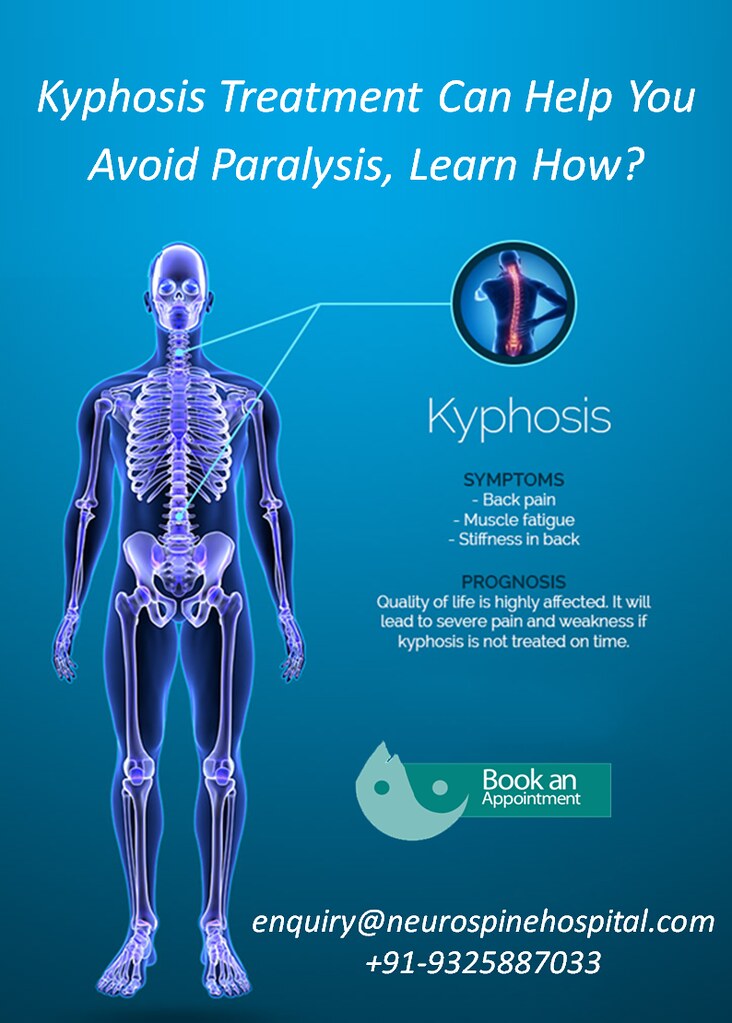Kyphosis Treatment

Kyphosis, or a hunchback or roundback, is a medical condition where the back in the lower back has an excessive curve. The lower back, or thoracic area of the back, has a normal slight curve to it.
However, if you have kyphosis then you will have a visible hump on the back of your shoulders
This hump can be either vertical or horizontal depending on the cause of your kyphosis.
There are two common types of kyphosis that you can experience. These two types are congenital and acquired. A congenital form of kyphosis occurs at birth, whereas an acquired form of kyphosis occurs later in life.
The acquired form of kyphosis is often caused by being born with a birth defect. The most common type of defect in this category is lumbar hypoplasia, which is when the lower back muscles do not fully contract during pregnancy or during childbirth. This muscle deficiency causes the spinal curve in the lower back to become curved. Some of the other causes include spinal stenosis (a narrowing of the spinal canal), spinal stenosis plus herniated disc, and spinal stenosis minus herniated disc.
Congenital kyphosis can occur because of a problem with the spinal canal. This problem can result from having a ruptured disc or herniated spinal discs. Sometimes a tumor or even an infection of the spinal canal can cause the curve to develop.
In order to treat kyphosis, surgery is sometimes performed on the lower back or other parts of the spinal canal to reduce the curve. However, most people find this method of treating their kyphosis very painful and inconvenient.
Another medical treatment for kyphosis is massage therapy. Massage therapy helps to relieve muscle stiffness and stress. It also helps to release the pressure on the nerves and muscle tissue that cause the pain.
One thing that people with kyphosis should avoid is physical activity. Because physical activity can cause the spinal curve to continue to be formed, even when it is not present, a person with kyphosis should avoid performing strenuous exercise such as jogging, lifting heavy objects, and other activities that require much of their energy.
You should also avoid doing any physical activity that requires you to bend over. Instead, you should stand up straight when sitting down. You should always bend your knees while walking as well. Walking with a cane is also advisable since cane can help keep your knees bent.
There are also some ways that you can try to reduce the symptoms of your kyphosis by dieting and by weight loss
Try to include more fruits, vegetables, and fish in your daily diet. Fruits like pineapple, oranges, and bananas are good choices as these fruits contain a lot of fiber.
There are also different kinds of weight loss supplements available today that can help a person suffering from kyphosis get rid of their condition. There are also natural weight loss supplements that you can make yourself that have no side effects.
The good news about kyphosis is that there are some effective treatment for it, which will help reduce the symptoms. Some of them include the use of heat, hydrotherapy, and massage therapy. There are also creams and ointments that you can use to help reduce the discomfort. There are also herbal supplements that you can make yourself to lessen the pain.
However, if your kyphosis continues, you may want to discuss with your doctor regarding the best course of action to treat your condition. Although surgery is considered to be one of the best methods, it should only be the last option.